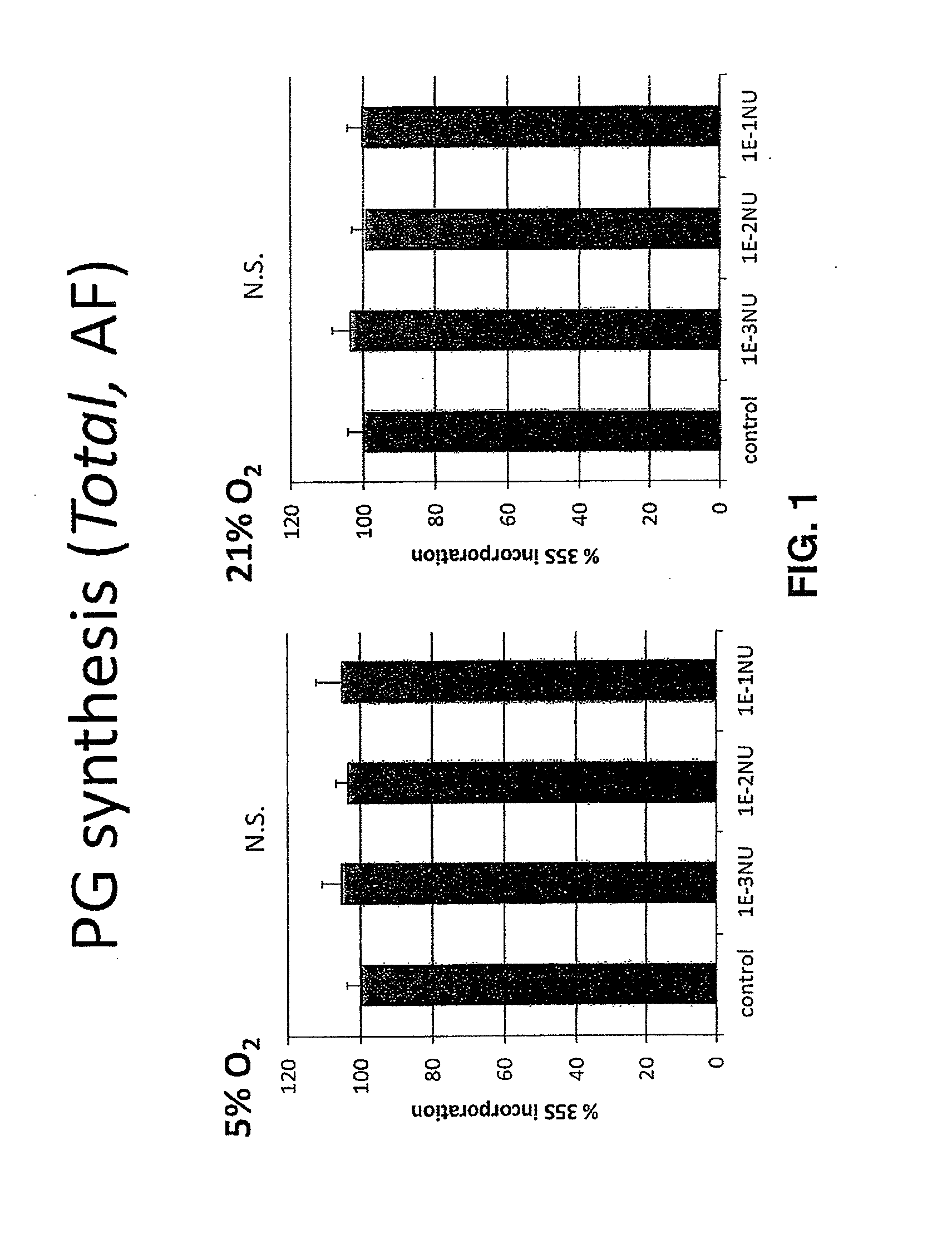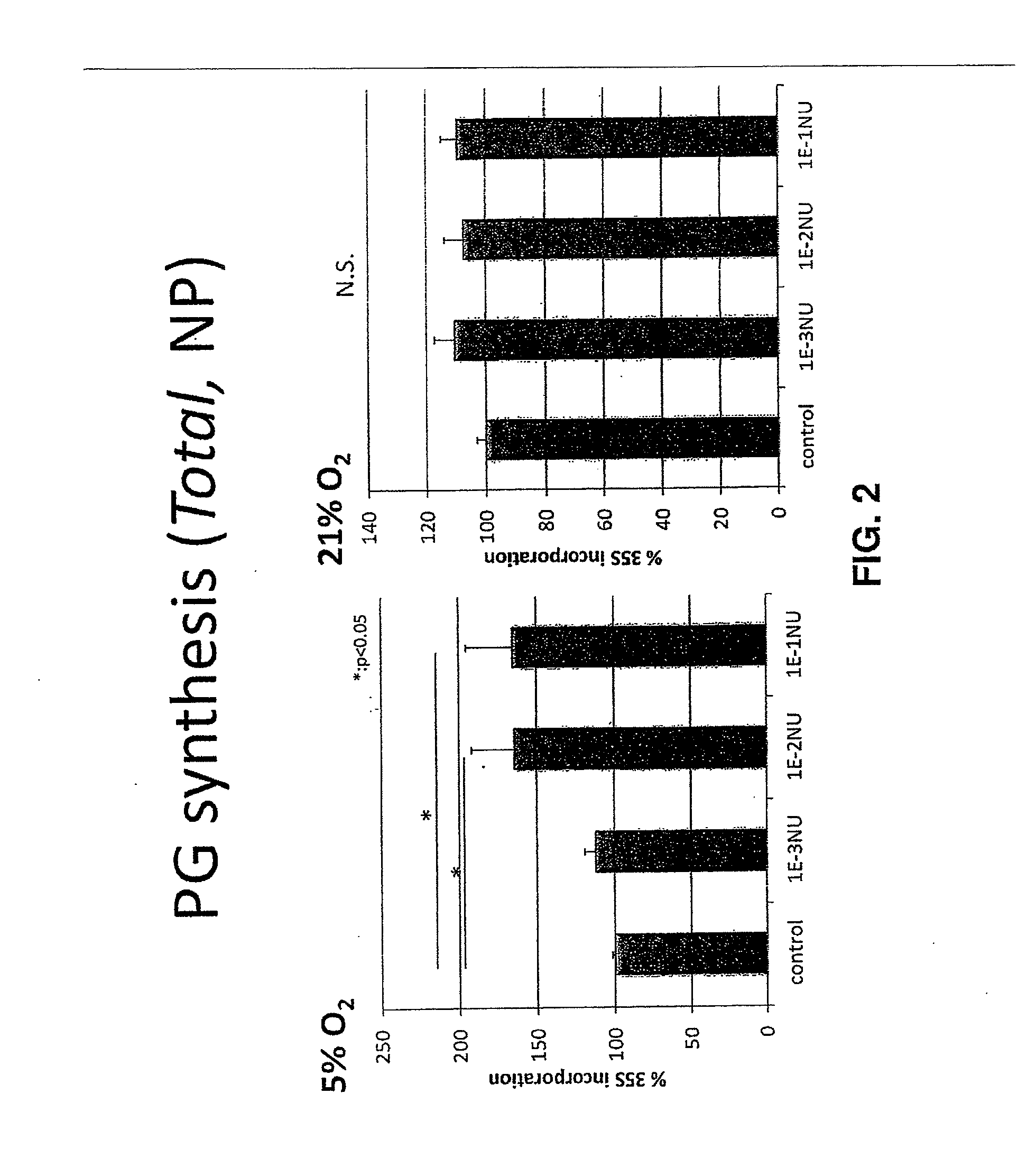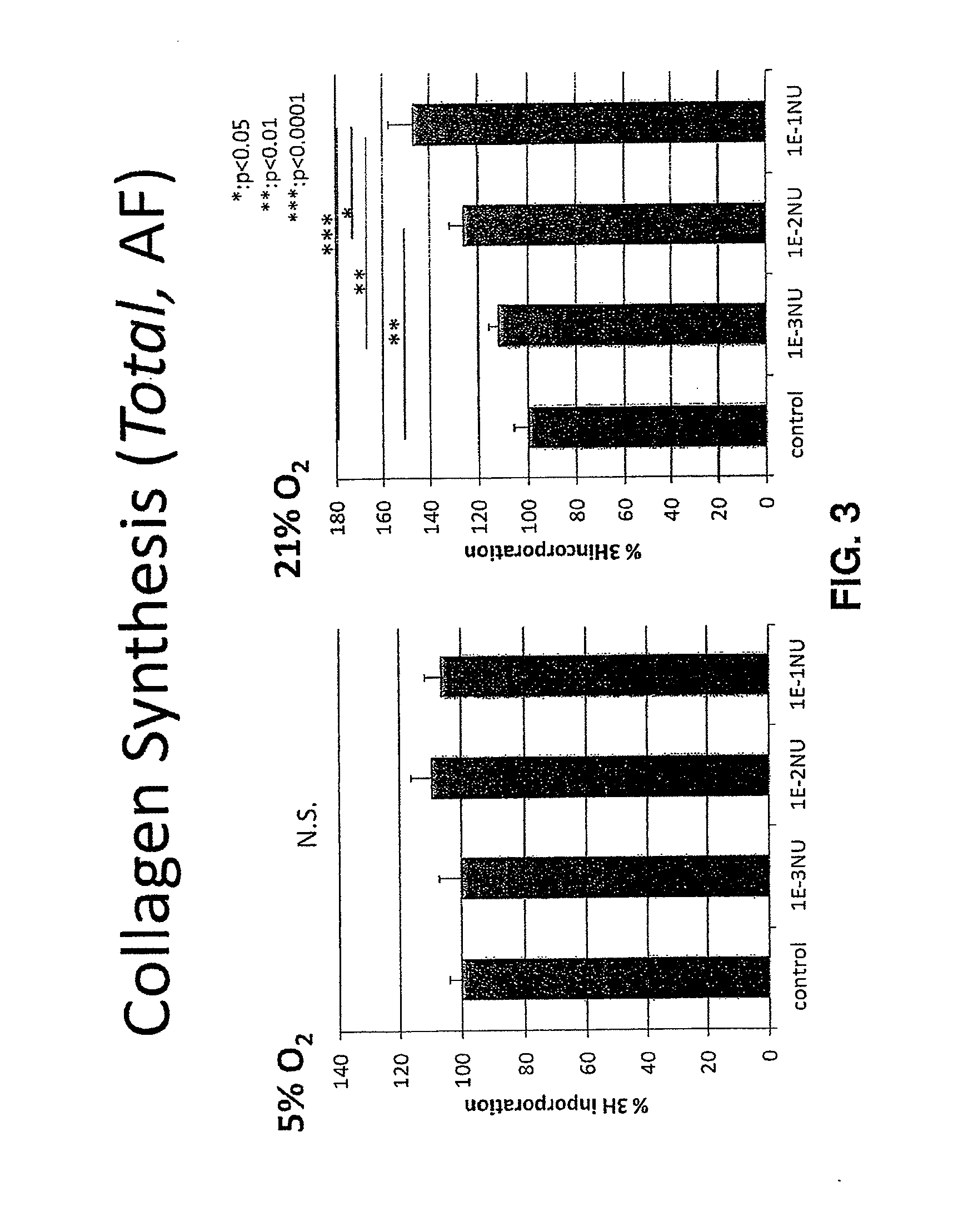Method for promoting the synthesis of collagen and proteoglycan in chondrocytes
a chondrocyte and proteoglycan technology, applied in the field of promoting the synthesis of collagen and proteoglycan in chondrocytes, to achieve the effect of promoting the synthesis of collagen and promoting the synthesis of proteoglycan
- Summary
- Abstract
- Description
- Claims
- Application Information
AI Technical Summary
Benefits of technology
Problems solved by technology
Method used
Image
Examples
example 1
[0029]Skins of healthy adult rabbits were inoculated with vaccinia virus. The inflamed skins were removed and crushed, and to the crushed skins, phenolated water was added. Then, the mixture was filtered under pressure, and the obtained filtrate was adjusted to pH 5 with hydrochloric acid, and then heated at 90 to 100° C. for 30 minutes. After deproteinization by filtration, the filtrate was adjusted to pH 9 with sodium hydroxide, further heated at 90 to 100° C. for 15 minutes, and then filtered. The filtrate was adjusted to about pH 4.5 with hydrochloric acid, and 2% activated carbon was added. The mixture was stirred for 2 hours and then centrifuged. To the collected activated carbon, water was added. The mixture was adjusted to pH 10 with sodium hydroxide, stirred at 60° C. for 1.5 hours, and then centrifuged and filtered to obtain a supernatant. To the collected activated carbon, water was added again. The mixture was adjusted to pH 11 with sodium hydroxide, stirred at 60° C. fo...
example 2
[0030]Skins of healthy adult rabbits were inoculated with vaccinia virus to be infected. Subsequently, the inflamed skins were aseptically removed and chopped, and then phenol-added glycerin water was added. The mixture was ground with a homogenizer to be emulsified. Subsequently, the emulsion was filtered. The obtained filtrate was adjusted to weak acidity (pH 4.5 to 5.5) with hydrochloric acid, then heated at 100° C. and filtered. The filtrate was adjusted to weak alkalinity (pH 8.5 to 10.0) with sodium hydroxide, further heated at 100° C. and then filtered. The filtrate was adjusted to about pH 4.5 with hydrochloric acid, and about 1.5% activated carbon was added. The mixture was stirred for 1 to 5 hours and then filtered. To the activated carbon collected by the filtration, water was added. The mixture was adjusted to pH 9.4 to 10 with sodium hydroxide, stirred for 3 to 5 hours, and then filtered. The filtrate was neutralized with hydrochloric acid.
example 3
[0031]Next, an example of the pharmacological test results concerning promoting activity on the synthesis of collagen and proteoglycan in intervertebral disc cells in which the extract from inflamed tissue inoculated with vaccinia virus (NTP) of the present invention obtained in Example 1 was used as a test substance, is shown. The effect of NTP on proteoglycan (PG) and collagen synthesis and cell proliferation in intervertebral disk cells is given below and in FIGS. 1-4.
1. Materials and Methods
[0032]Bovine nucleus pulposus (NP) and anulus fibrosus (AF) cells, isolated from 14-18 month-old bovine coccygeal intervertebral discs, were encapsulated in alginate (4E+6 cells / mL) and cultured for 11 days in DMEM / F12 with 10% fetal bovine serum (FBS) under normoxic (21% O2) or hypoxic (5% O2) conditions. These cultures were treated with three different concentrations (0.001 NU / ml, 0.01 NU / mL, and 0.1 NU / mL) of NTP for three days. To assess the synthesis of PGs and collagen, the cultures wer...
PUM
 Login to View More
Login to View More Abstract
Description
Claims
Application Information
 Login to View More
Login to View More - R&D
- Intellectual Property
- Life Sciences
- Materials
- Tech Scout
- Unparalleled Data Quality
- Higher Quality Content
- 60% Fewer Hallucinations
Browse by: Latest US Patents, China's latest patents, Technical Efficacy Thesaurus, Application Domain, Technology Topic, Popular Technical Reports.
© 2025 PatSnap. All rights reserved.Legal|Privacy policy|Modern Slavery Act Transparency Statement|Sitemap|About US| Contact US: help@patsnap.com



